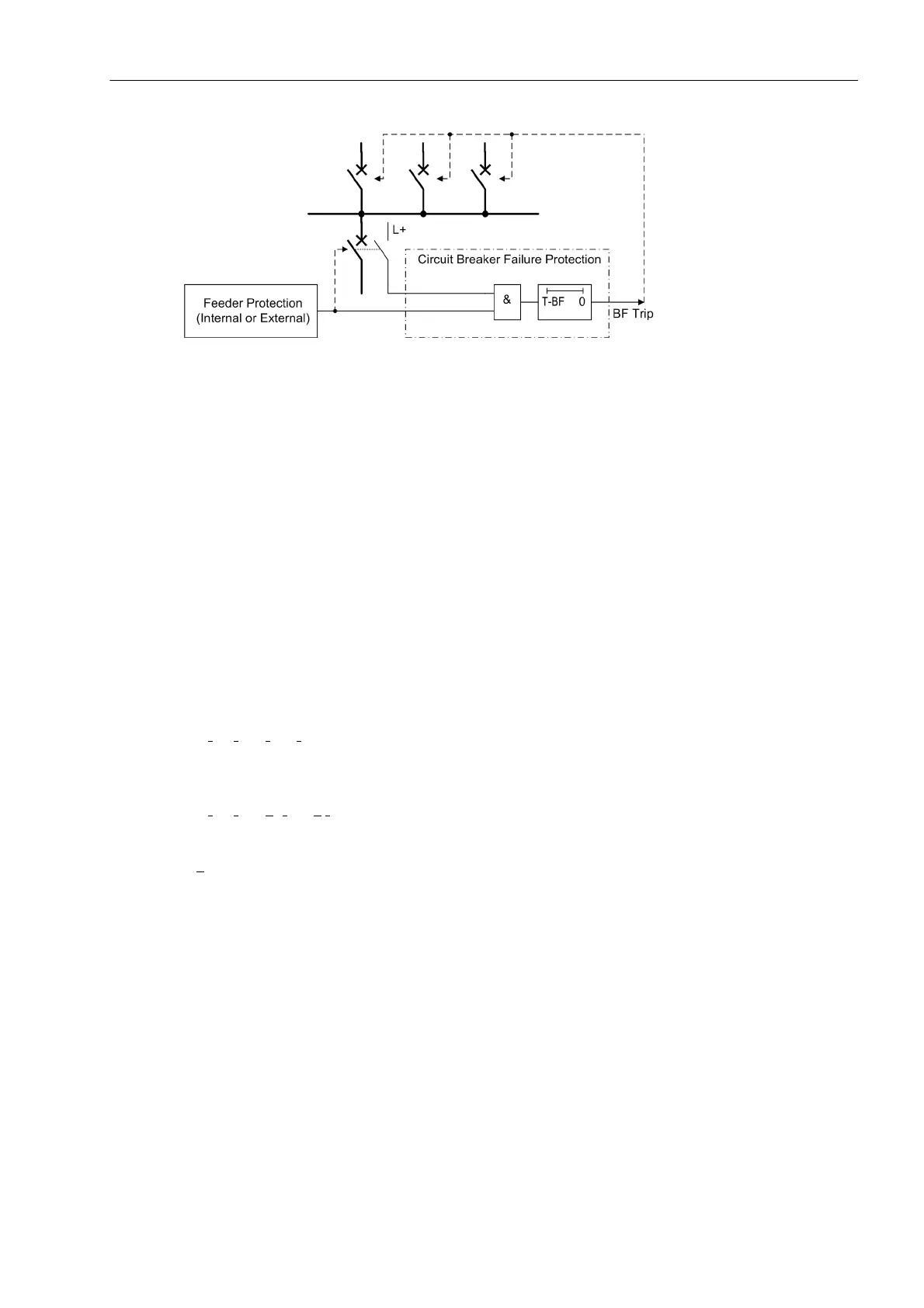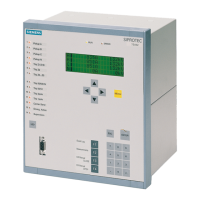Functions
2.13 Circuit Breaker Failure Protection
SIPROTEC, 7SD610, Manual
C53000-G1176-C145-6, Release date 02.2011
179
Figure 2-65 Simplified function diagram of circuit breaker failure protection controlled by circuit breaker aux-
iliary contact
Current flow monitoring
Each of the phase currents and an additional plausibility current (see below) are filtered by numerical filter al-
gorithms so that only the fundamental component is used for further evaluation.
Special features recognize the instant of current interruption. In case of sinusoidal currents the current interrup-
tion is detected after approximately 10 ms. With aperiodic DC current components in the fault current and/or in
the current transformer secondary circuit after interruption (e.g. current transformers with linearized core), or
saturation of the current transformers caused by the DC component in the fault current, it can take one AC cycle
before the interruption of the primary current is reliably detected.
The currents are monitored and compared with the set limit value. Besides the three phase currents, two further
current thresholds are provided in order to allow a plausibility check. If configured correspondingly, a separate
threshold value can be used for this plausibility check (see Figure 2-66).
The earth current I
E
(3·I
0
) is preferably used as plausibility current. The earth current from the starpoint of the
current transformer set will be used if it is connected to the device. If this current is not available, the device will
calculate it from the phase currents using this formula:
3·I
0
= I
L1
+ I
L2
+ I
L3
Additionally, the value calculated by 7SD610 of three times the negative sequence current 3·I
2
is used for plau-
sibility check. This is calculated according to the equation:
3·I
2
= I
L1
+ a
2
·I
L2
+ a·I
L3
where
a = e
j120°.
These plausibility currents do not have any direct influence on the basic functionality of the circuit breaker
failure protection but they allow a plausibility check in that at least two current thresholds must have been ex-
ceeded before any of the circuit breaker failure delay times can be started, thus providing high security against
false operation.
In case of high-resistance earth faults it may occur that the earth current exceeds the sensitively parameterized
threshold value 3I0> BF (address 3912), the phase current involved in the short-circuit, however, does not
exceed the threshold value I> BF (address 3902).The plausibility monitoring would prevent the breaker failure
protection from being initiated. In this case the pickup threshold of the phase current monitoringI> BF can be
switched over to the threshold value 3I0> BF. For this purpose, use the binary input 1404
„>BFactivate3I0>“. This binary input is linked to an external signal which indicates a high resistance fault,
e.g. earth fault detection, or detection of displacement voltage. With this method, the more sensitively param-
eterized earth current threshold is also used for the phase current monitoring (Figure 2-66).

